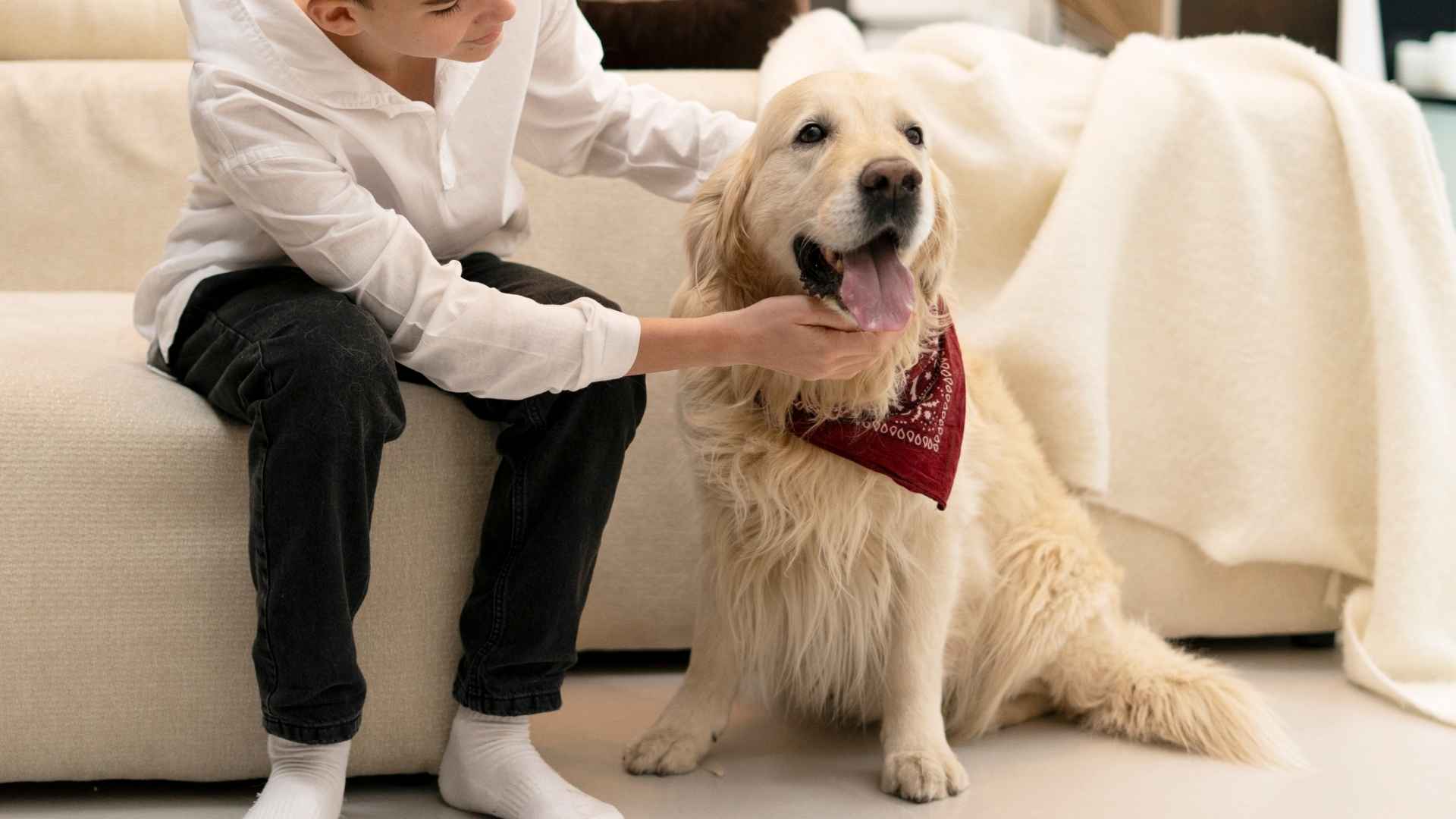Did you know that spending time with a dog can lower blood pressure, reduce stress, and boost overall happiness? Pet therapy is rapidly gaining recognition for its profound benefits, especially for people with disabilities, the elderly, and those facing dementia. But when it comes to therapy dogs, not all breeds are created equal.
If you’re looking for a high-energy companion to spread joy and provide emotional support, certain breeds stand out for their enthusiasm, loyalty, and ability to engage. These dogs not only offer healing companionship but also thrive on mental and physical stimulation, making them ideal for active individuals or environments that demand extra energy.
Whether you’re considering an emotional support animal for your well-being, understanding these best therapy dog breeds can help you make the perfect choice. Let’s dive into the world of energetic, loving dogs that make the best therapy companions!
High Energy Therapy Dog Breeds
1. Border Collie
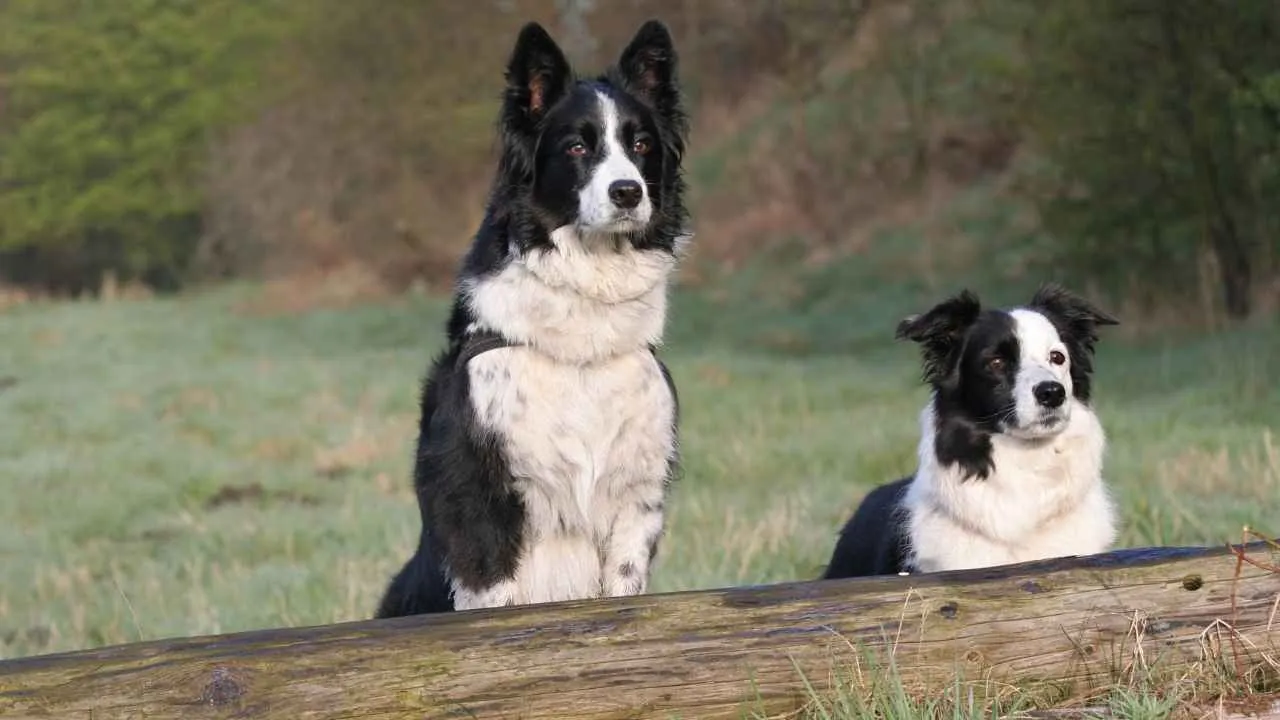
Border Collies are renowned for their boundless energy and intelligence, requiring a minimum of one hour of vigorous exercise daily to stay happy and healthy. Without enough physical activity, they can become frustrated and potentially destructive.
Originally bred as sheep herding dogs in the border regions of Scotland, England, and Wales, Border Collies are designed to be highly active and focused. This breed thrives on mental stimulation and physical challenges, making them ideal for families with an active lifestyle.
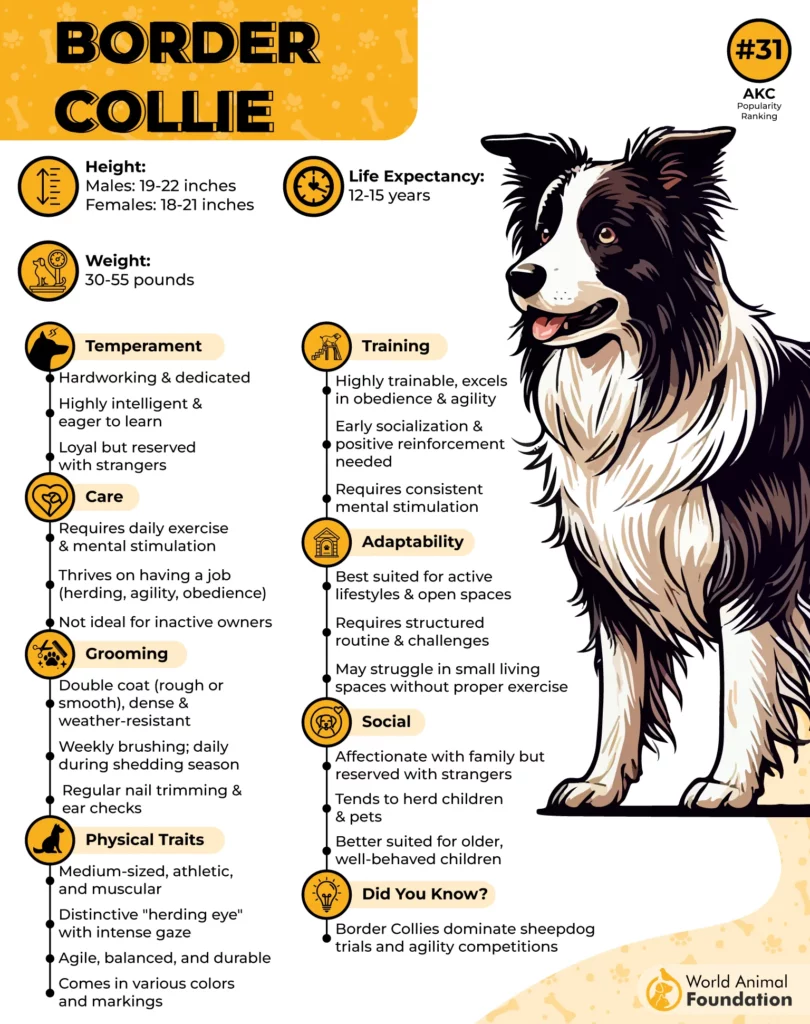
A Legacy of Excellence: The Origins of the Border Collie
The Border Collie’s modern heritage began in 1906 with the formation of the International Sheep Dog Society, which helped standardize the breed’s traits. The first iconic Border Collie, Old Hemp, born in 1894, is considered the father of today’s Border Collie breed. These dogs were valued for their exceptional herding abilities, sharp intelligence, and the hypnotic “eye” they use to control flocks of sheep.
Why Border Collies Make Amazing Therapy Dogs
Thanks to their intelligence, loyalty, and affectionate nature, Border Collies excel as service and therapy dogs. Their ability to learn new tasks quickly, combined with their friendly disposition, makes them ideal for those in need of an emotional support dog. They’re dedicated and alert, characteristics that serve them well in therapy settings.
Key Benefits of Border Collies as Therapy Dogs
Highly Intelligent: Can quickly learn tasks and commands.
Eager to Please: Always motivated to help their handler.
Affectionate Nature: Loves to receive and give affection, making them ideal for therapy.
Focused and Alert: Their “eye” and intense focus make them stand out in training and therapy settings.
2. Doberman Pinscher
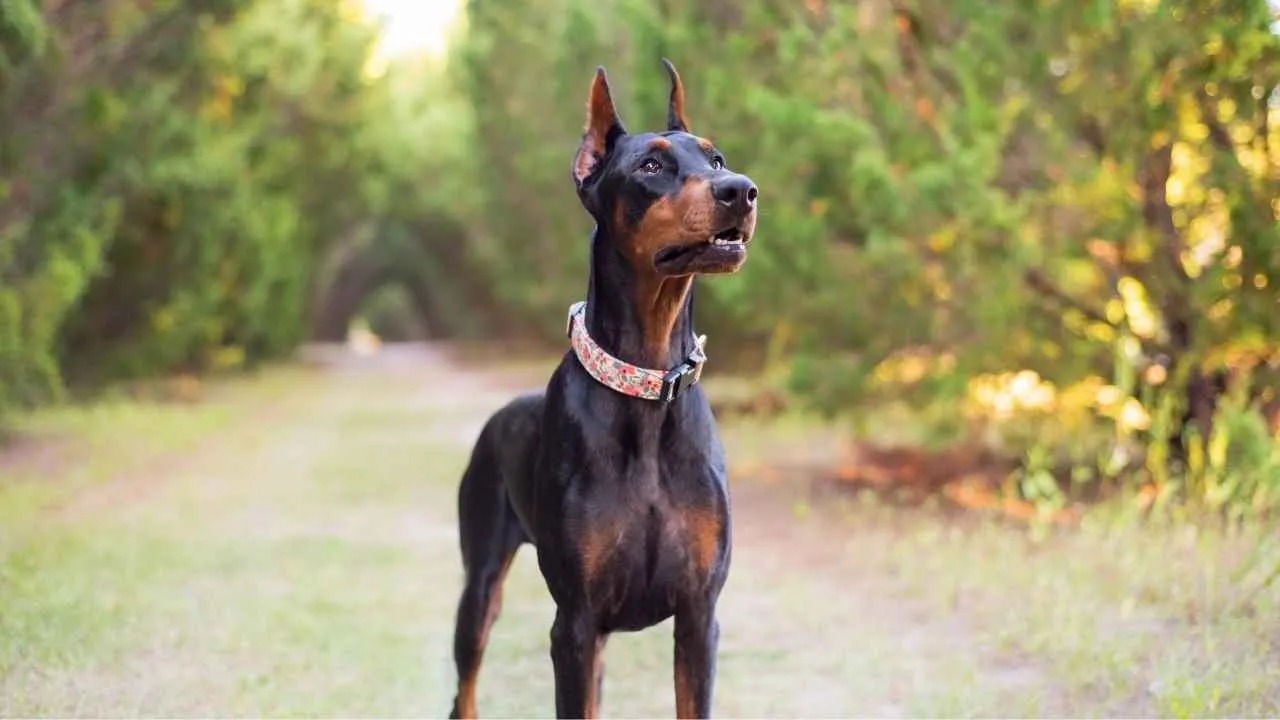
The Doberman Pinscher, developed by Karl Friedrich Louis Dobermann in the 1890s, is renowned for its striking appearance, keen intelligence, and loyalty. Originally bred as a guard dog, Dobermans have earned their reputation in various roles, including police, military, and service dogs.
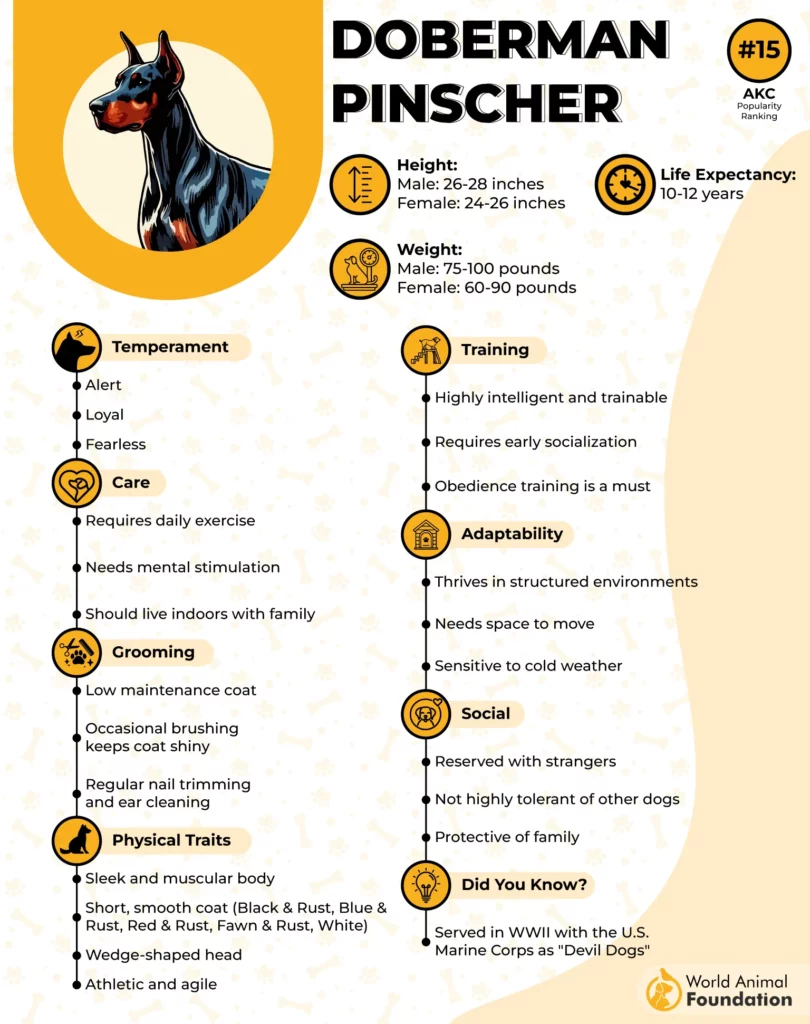
Their versatility, protective instincts, and strong connection with humans make them a unique and admirable breed.
Why Dobermans Make Excellent Therapy Dogs
While Dobermans are known for their fierce loyalty and natural guarding abilities, they are also deeply affectionate with their human companions. These dogs form strong bonds and thrive on human interaction, making them excellent pets for families. Their balance of protectiveness and unconditional love is what sets them apart as therapy dogs.
Dobermans’ intelligence, loyalty, and protective nature make them outstanding candidates for therapy and service work. Some of the key tasks they perform include:
Guide Dogs: Assist the blind by navigating obstacles.
Hearing Dogs: Alert deaf individuals to important sounds like doorbells or alarms.
Mobility Assistance Dogs: Aid in daily tasks like wheelchair pushing or fetching objects.
Seizure Response Dogs: Assist individuals with seizures by staying with them or alerting others for help.
Psychiatric Service Dogs: Support individuals with mental disabilities, including autism or agoraphobia.
3. Golden Retriever

Golden Retrievers are one of the most popular dog breeds, known for their high energy, intelligence, and unwavering loyalty. Originally bred to retrieve game for hunters, their energetic, focused, and eager-to-please nature has made them a top choice for both family pets and working dogs.
People with “Golden Retriever energy” embody the breed’s warm and engaging traits. They are friendly, approachable, and naturally draw others in with their enthusiasm and positivity. Loyal and dedicated, they prioritize relationships and offer consistent support. Their intelligence and curiosity make them adaptable, quick learners who enjoy challenges and take pride in bringing joy to others.

Golden Retrievers as Therapy Dogs: Compassionate and Calm
As noted by Totallygoldens, Golden Retrievers are one of the best choices for therapy work due to their friendly, social nature and gentle temperament. Key qualities include:
Affectionate and empathetic: They instantly connect with people, offering comfort to those in need.
Gentle and calm: Even in busy environments, they remain patient and friendly.
Highly trainable: Their intelligence and eagerness to please allow them to perform a variety of tasks, including:
Visiting hospitals, nursing homes, and hospice centers
Comforting children in crisis
Providing seizure alerts
Offering emotional support to people with PTSD and panic attacks
Interacting with therapy dogs like Golden Retrievers offers significant mental and physical benefits. Their gentle presence helps reduce stress, lower blood pressure, and ease anxiety. As loyal companions, they combat loneliness and depression by providing emotional support and comfort.
Their intelligence and empathy enhance mental well-being, offering a sense of purpose and a calming distraction from daily struggles, making Golden Retrievers one of the most effective and beloved therapy dog breeds.
4. Labrador Retriever
Labrador Retrievers are known for their energy, intelligence, and friendly nature. While some may have a more laid-back personality, others are boisterous and full of life, constantly moving and exploring. This can lead some owners to wonder if their Lab is overly “hyper.” Understanding the roots of their energy and how to channel it can help ensure a happy, well-behaved companion.
Labradors as Therapy Dogs: A Perfect Blend of Energy and Compassion
Labrador Retrievers are ideal therapy dogs thanks to their friendly, affectionate, and loyal nature. They make a significant impact in therapy settings by:
Stress Reduction: Labradors are naturally soothing, and their gentle presence helps lower stress levels, reducing anxiety and promoting a calm state of mind. Petting or interacting with them can trigger the release of endorphins, which aids in emotional relaxation.
Emotional Support: Labradors provide a comforting, non-judgmental presence, offering companionship to individuals during tough times. Their affectionate nature helps alleviate feelings of loneliness, boosting emotional resilience.
Enhanced Social Interaction: Therapy Labradors encourage interaction among patients and with their caregivers, creating opportunities for socialization and shared experiences. This fosters a sense of community and support, helping individuals feel more connected.
Physical Benefits: Labradors are motivating companions in rehabilitation settings, inspiring individuals to participate in physical activities. Their playful nature encourages movement, helping patients engage in therapy and improve their physical strength and mobility.
5. Papillon
Papillons are charming, energetic, and highly social dogs. Known for their “butterfly-like” ears, they are often described as the perfect mix of lively energy and calm companionship. These small dogs are easy to care for and adapt well to different living situations, making them great pets for families, singles, or those in apartments.
Here is Why Papillons Make Excellent Therapy Dogs!
Papillons are ideal therapy dogs due to their intelligence, affectionate nature, and eagerness to please. Their friendly disposition and strong bond with people allow them to provide comfort and emotional support in therapy settings.
Known for their alertness, they excel in environments requiring attention and responsiveness, while their playful yet calm demeanor makes them great companions for individuals in need.
Here are key traits that make them suitable for therapy work:
Highly intelligent and eager to please, making training easy and effective
Friendly, social, and great at bonding with people, including strangers
Alert and responsive, ideal for environments that require attention
Playful yet calm, ensuring they can adapt to both active and relaxed settings
Affectionate and loyal, they form strong emotional connections with their owners
Interesting Fact: A Storied History with Royal Ties
Papillons trace their lineage to European Toy Spaniels and were favored by European royalty, appearing in paintings as early as the 16th century. Their distinctive “butterfly” ears gained popularity in the late 19th century. Today, their charm is once again being recognized, particularly after one papillon won the prestigious Westminster Kennel Club Dog Show in 1999.
6. Rottweiler
The Rottweiler’s origins date back to ancient Rome, where they served as herding and guarding dogs for the Roman legions. Over time, they evolved in Germany as the Rottweiler Metzgerhund (butcher’s dog), assisting in pulling meat carts and guarding money pouches.
Today, Rottweilers are not just livestock handlers but versatile dogs excelling in working roles in police work, search and rescue, and as devoted family companions.
Rottweilers as Service Dogs: A Rising Star
Though not traditionally thought of as service dogs, Rottweilers possess many qualities that make them exceptional candidates for assistance roles, including therapy, medical alert, and psychiatric service work. Servicepets states that these dogs can offer emotional support, life-saving medical alerts, and help alleviate anxiety or depression symptoms for their handlers.
Why Rottweilers Excel as Service Animals
Loyalty and Dedication: Rottweilers are incredibly loyal, prioritizing their handler’s needs above all else, which is essential for service dog work.
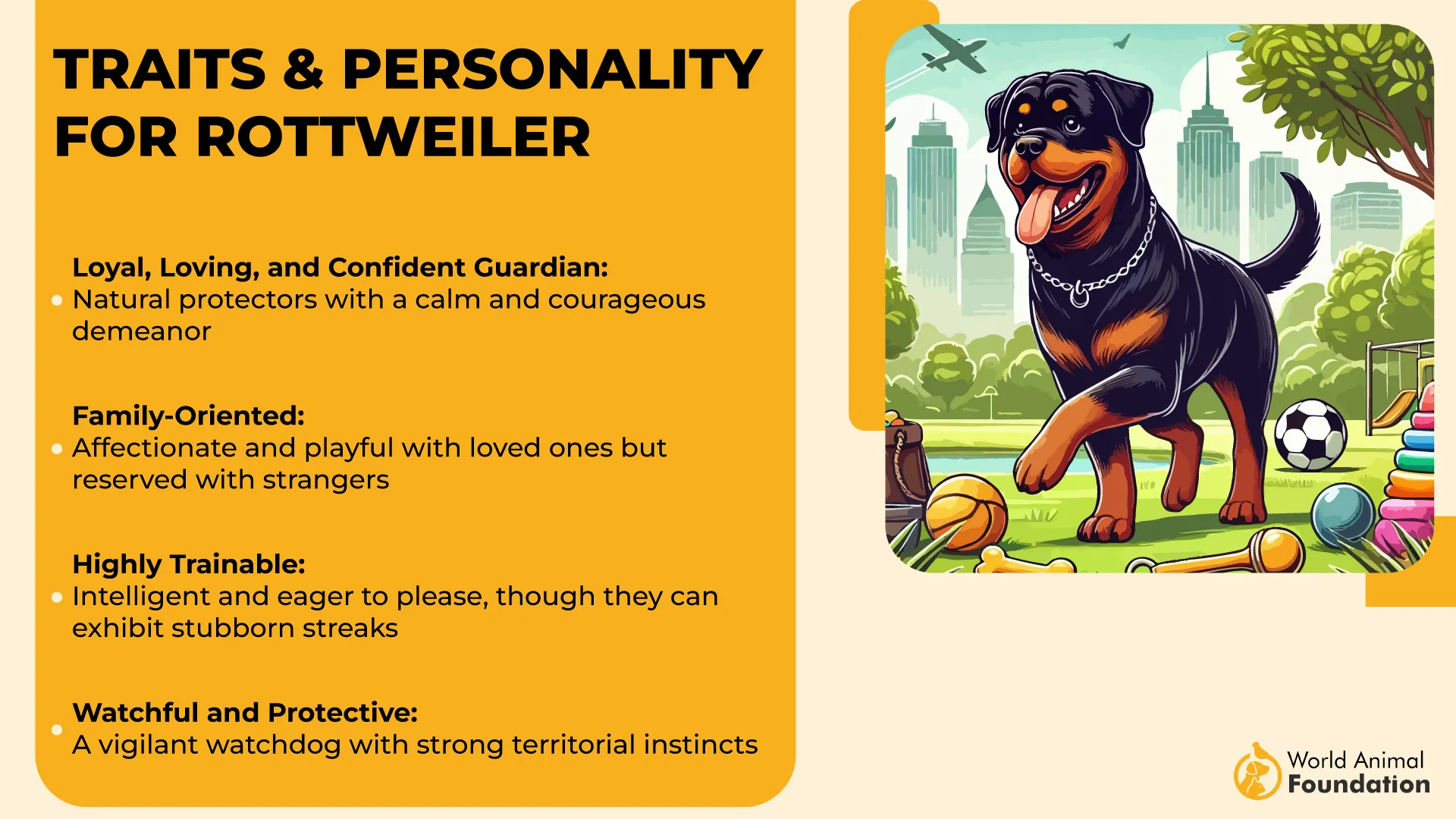
High Intelligence: Ranked among the top ten intelligent dog breeds by the AKC, Rottweilers quickly learn complex tasks, which is crucial for service dog duties.
Natural Work Ethic: Originally bred for herding, Rottweilers have a strong drive and focus, making them reliable workers.
Notable Rottweiler Service Dogs
Wynd, Award-Winning Therapy Dog: In 2015, Wynd won the Award for Canine Excellence in Therapy. She worked with veterans, survivors of tragedy, and children, leaving a lasting legacy.
Dieter, Service Dog for Disabled Veterans: Dieter assists Vietnam Veteran Neil Williams with mobility and advocating for disabled veterans’ rights. Dieter’s role in public service showcases the Rottweiler’s adaptability and intelligence.
7. German Shepherd
German Shepherds are renowned for their intelligence, which makes them excellent candidates for therapy work. Their quick learning ability, emotional sensitivity, and close relationship with humans allow them to provide valuable support to individuals with various needs. These dogs excel in a range of therapeutic roles due to their intelligence and adaptability.
Here is why German Shepherds Excel in the Therapy Role!
Britannica states that German Shepherds, particularly working-line German Shepherds, are exceptionally suited for therapy and service roles due to their intelligence, endurance, and focus. Bred for tasks that require concentration, these dogs excel in formal training and remain attentive in therapeutic environments.
Their natural calm demeanor and high intelligence make them easy to train, enabling them to quickly adapt to commands and routines, ensuring they provide both emotional and physical support.
Their loyal, empathetic nature makes them excellent companions in therapeutic settings, offering comfort and stability. German Shepherds are emotionally sensitive, quickly recognizing and responding to human emotions, which allows them to provide reassurance and support when needed most.
Versatility in Therapy Settings
One of the standout qualities of German Shepherds as therapy dogs is their versatility. These dogs can thrive in a variety of environments, from hospitals to private homes, providing both emotional and physical support.
Multiple Environments: Whether in hospitals, schools, or nursing homes, German Shepherds adapt well to diverse therapeutic settings with proper training
Physical Support: In addition to emotional support, they can assist with mobility, pick up items, or even open doors, making them invaluable to those with physical disabilities.
Conclusion
High energy therapy dog breeds like the German Shepherd, Rottweiler, and Australian Shepherd combine stamina, focus, and emotional sensitivity—key traits for successful animal-assisted therapy. Whether as a loyal companion dog or a steady presence in stressful environments, their natural drive becomes a powerful healing force.
Even smaller high-energy breeds like Beagles, Yorkshire Terriers, and Shih Tzus bring value through their friendly nature, soft fur, and strong bonds with humans and other animals.
From gentle giants to cuddly lap dogs, these companion animals thrive with positive reinforcement and offer comfort to individuals and even strangers alike, making them some of the best breeds for therapy and emotional support.


